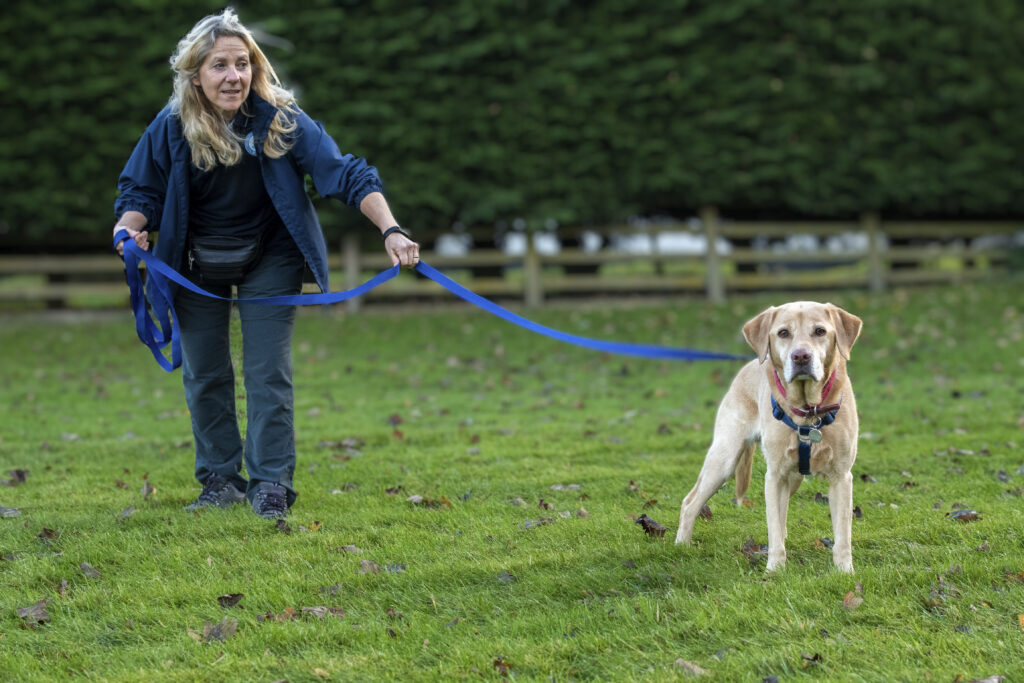Using Long-line Training Leads
 Copyright Caroline Clark
Copyright Caroline ClarkLong-line leads are generally used to teach a dog a recall cue which is obviously important and should form part of any dog’s general training. However, I think they can work well for a number of other different scenarios including controlling dogs that cannot be let completely off their leash. This allows them more freedom whilst the handler stays in control. They also prove invaluable when beginning to train a dog to turn and respond to the ‘come away’ cue.
The length of these lines vary but, for most general training and greater control, it’s better to stick to one that is no longer than 5 metres. Long line leads are suited for outside work. For indoor work I recommend using a house-line which is thinner and shorter in length.
Long-line leads look like an elongated dog lead, with a clip at one end and a handle at the other. They shouldn’t be mistaken for a retractable lead which do not offer a good level of control and can jar the dog’s neck when being wound in. Long-line leads are usually made of fabric and come in various styles and weights. Lighter weight ones obviously suit smaller dogs and the heavier ones are better for larger breeds.
Long-line leads can be attached to a collar or on the connection points on a harness but, to prevent the dog tripping up over it, I prefer to use the back connector. They can take a bit of getting used to and it’s common to let too much length out which can get caught around objects or tangled up around the feet and paws. Thus, the trainer will need to practise their handling skills in a safe, open space. Once mastered, they can be used in the same way as a regular lead and the dog should be able to walk loosely when one is attached as well as be taught how to slow down and stop when the handler uses the line to apply the brakes.
Using a Long-line Lead
- After unravelling the line it should be gathered up to form a loop in one hand.
- After attaching the clip to the back connector of the harness, the other hand should hold the line closer to the dog, while the other holds on to the handle along with the rest of the looped line.
- The hand closest to the dog is the one that takes care of the slack, allowing the line to run through it when more freedom is required and gripping it to slow down or stop the dog when required.
- The hand with the loops is the one that controls the amount of line that is released and also gathers in the length of the line to shorten it again.
- Using both hands in this way provides a safer contact and also prevents any harsh pulling which might startle the dog as well as cause them discomfort.
Long-line leads can also be useful when introducing dogs to each other after their initial meet and greets have gone well. Once it has been established that they are relaxed around one another it can be a daunting prospect to let them off-lead. Having the long-lines means that in safe spaces they can have more freedom to interact but the handlers still have some control. Progressive steps in the training often involves the long-line being dropped – so they trail on behind. The ends can be taken up if necessary but this allows the dogs to be assessed before letting them completely off lead if this is deemed safe.